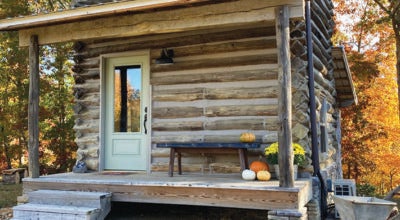The Literary Corner: Renegade Writer’s Guild
Published 9:54 am Thursday, November 14, 2019
|
Getting your Trinity Audio player ready...
|
“Swift Night Out”
By David R Moore
I did not know what to expect or see when I accompanied a friend of mine, who was a member of the local Audubon Society, to view Swift Night Out. On September 10 we journeyed to Northwest Middle School in Dozier (Forsyth County).
We pulled into the parking lot around 7:30 pm where other members of the local Audubon Society were beginning to assemble. Nearby a small group of elementary age girls were learning the chants and choreographies of cheerleading oblivious to the impending show. They were having the greatest of times with their dancing, clapping, and laughing.
Initially, only one or two, perhaps three or four chimney swifts could be seen flying high overhead in the cloudless sky. As the minutes, slowly passed, I detected more flying in from the various points of the compass. It was not long before there were perhaps fifty or so flying in small acrobatic circles high overhead. Sometimes they would all disperse and seem to disappear; within no time, they would return in increasing numbers. As the tired sun disappeared into its nightly bed, more and more chimney swifts joined the mass of chittering fliers.
As the number of chimney swifts increased, individual acrobatic flying ceased and was replaced by the mass of swifts flying in unison in a large circular pattern flowing counter clockwise. However, every now and then, perhaps caused by a wind change, a segment of the mass would perform a flip in their movement and start flying in a circular but opposite direction. As if watchin the “wave” at a baseball stadium, the entire mass of birds would follow suit, performing the flip, and soon the entire collection would also be flying clockwise. After a few minutes, another “wave” flip would occur as the mass of circling swifts would again be flying in a counter clockwise direction.
The terra firma center point of their circle was the 20-foot tall chimney of the Northwest Middle School. This now unused chimney was to become their abode for their nightly roost.
As the skies darkened, the circling mass of swifts slowly descended to lower elevation and became more compact. To me the dark mass of swifts took on the likeness of a tornado with the tip of the tornado at the top of the chimney. A constant stream of chimney swifts disappeared into the chimney. For almost twenty minutes, the chimney was fed until there were no more.
I estimated there were about 6000 swifts, based upon my non-scientific counting. I do not know how that chimney had enough space to hold all those birds, yet all the swifts were able to enter without any being turned away by a no vacancy sign.
Once I returned home, I read some articles about swifts. I really did not know much about them, other than being able to recognize their shape high in the sky.
The chimney swifts’ genus name is Chaetura, which comes from the Greek words chaite meaning “spine” and oura meaning “tail”. The genus name is appropriate as the chimney swift’s tail feathers end in sharp, protruding points. These 5-inch birds breed in the eastern half of the United States and prefer to nest in human-built structures, most preferring the chimney, of course. The swifts are incapable of perching, but with toes being capped with a sharp, curved claw, they easily cling to vertical surfaces.
Researchers estimated that single pair of adults raising 3 babies consumes a weight equivalent of 5000 housefly-sized insects per day. Obviously they are beneficial in keeping the insect population down.
Chimney swifts are gregarious birds and mate for life. They are in constant flight, feeding on a wide assortment of flying insects and “balloon” spiders carried by gossamer. They even drink on the wing, skimming the surfaces of water with their beaks.
As summer closes, the swifts finish raising their young and begin to congregate in communal roosts prior to the fall migration. The chimney swifts then migrate to countries such as Ecuador and Peru in South American to winter.
Nature provides us with many wonders. I feel fortunate being able to see Swift Night Out.
“Wisdom in the Trees”
By Kevin F. Wishon
In North Carolina, storms are common occurrences, especially in the spring, summer, and early fall. As I recently stood watching a dark gathering of clouds pass, the wind hammered nearby trees for several minutes. Valiant through it all, these trees withstood the assault and recovered as though nothing had happened. Thankful for their resilience, I recalled several occasions in the past when large oak trees and pine trees fell victim to the wind and rain. They, too, were strong, but even they succumbed to nature’s wrath.
The trees reveal interesting lessons about our own lives. As strong and healthy as we may feel, somewhere deep inside of us, there are weaknesses. We may not feel them, nor can current technology fully detect them in advance. Yet, after several years have passed, and the storms of illness and stress have taken their toll, the weaknesses in our health will appear. I’ve seen this happen many times over the years I’ve lived. The potential for a weakness to surface is ever-present in us all.
So, if the trees are my teacher, what else can I learn from them? With their quiet existence, we hardly notice them until they’ve grown in size or changed leaf color. The trees live for years in peace and calm. I, too, should seek this kind of life if possible. Yet, I realize this is not always attainable.
Trees burrow deep with their roots, gripping the earth for nourishment and stability. When trouble or sickness comes, your family and close friends may be the only things that keep you from despair. Also, trees bask in the daylight soaking up the energy and striving to reach higher for more. While I cannot absorb as much sunlight as a tree, I should appreciate the light of each day and enjoy its rays to feed my body health-wise.
Lastly, trees grow with a steady frequency. They never stop unless disease or weather is burdening them. I’ve tried to remember this lesson by learning new things and accepting new challenges as I grow older. Additionally, trees cycle through many years of leaf shedding and regrowth. In this, the takeaway for me is that we have habits and baggage that need shedding from time to time. For there to be renewal in our own lives, we must accept the departure of unfruitful people and things from our lives. As a whole, trees give wonderful examples for us to follow in our own lives when facing trouble, stress, and even illness.
“Find the Time”
By Stephanie Williams Dean
I want to tell you about someone.
I want to tell you about the Christian patient I saw this morning who told me the questions I asked were none of my business. He said he resented my being there, and I was too personal, and when I asked if I could pray with him, he emphatically answered, “No.”
I want to share with you about the elderly gentleman who lost his wife last year after 55 years of marriage, whose eyes lit up in gratitude to have someone stop by to see him, take time to sit and talk to him and pray with him.
I want to let you know about the man who cried telling me his wife was home alone after suffering a stroke, and with him in the hospital, there was no one to take care of her.
I want to remember and tell you about the young lady with pancreatitis who was born with Spinal Bifida and is paralyzed and can’t walk, yet manages to lead a young girls’ ministry and welcomed prayer.
I want to tell you about the young man who shared with me his trials and disabilities and then asked me if he could shake my hand when I stood up to leave after praying with him.
And the former heroin addict who wanted to tell me just how hard it was to overcome her addiction – welcomed prayer – and then wanted to show me the new pajamas she bought down in the gift shop.
And the black woman whose husband had left the room to have a procedure, a woman so beautiful at 82 who wanted to share with me everything about their wonderful marriage and then invited me to visit her church.
Or the patient who held out her hands to hold mine when I offered to pray with her.
And the patient who made me cry when he told me he knew he would be going to his eternal home soon.
Or the patient who was in great pain and suffering, but managed to pray aloud along with me as I spoke.
There are so many beautiful people who are suffering. And alone. Find the time.
“Harvests”
By Linda H. Barnette
This time of year is harvest season, that time at the end of summer/beginning of autumn when all of the crops are gathered in the fields and stored away for the winter. The idea of harvest festivals was brought to America by the early pilgrims who had celebrated them back in their native lands. In England, for example, the harvest festivals coincided with the Harvest Moon, or the autumn equinox. I thought it interesting to learn about a very old celebration called Lammas Day where people all brought loaves of bread to church to celebrate the reaping of the crops. They gave the bread to the poor folks in the towns.
This subject also brings to mind the story of Ruth and Boaz in the Bible. Because there was a famine in their country of Israel, Naomi and her daughter-in-law, Ruth, go to Judah because there is food in that land. A wealthy farmer allowed them to glean the grain in his field. Then the farmer married Ruth, who became the great-grandmother of David, the ancestor of Jesus.
In any case, it seems like people have always celebrated the gift of food for the winter. I personally remember going to a corn-shucking at my dad’s uncle’s house on Becktown Road, probably in the late 1940’s or early 1950’s. All of his cousins and aunts and uncles who lived in that area were there: Hamiltons, Becks, and Grubbs, and other friends and neighbors as well. Uncle Fuller Hamilton had a large group of tables in his backyard, and those tables were absolutely covered with food, so much so that it was a real feast. It was customary at that time to celebrate the gathering of a successful harvest and to thank the good Lord for it.
And when I ponder all of God’s gifts, I think of that great old hymn, “Come, Ye Thankful People Come,” which is sung in many churches during the Thanksgiving season. Let us always be thankful to God for his many blessings. Deuteronomy 26:10 says, “So now I bring the first of the fruit of the ground that you, O Lord, have given me.”
“Candle in the Night”
By Shari L. Keller
The only way to truly experience the mystical power of a candle is to light it in complete darkness. With that in mind, I turn off my PC screen, set my trusty Yankee Candle in front of my keyboard and with extension lighter in hand, I turn off the lights. Flicking the lighter several times, I finally get fire and light the well – used wick. A warm glow quickly grows, magnified by the glass surrounding it. Speckles of black soot lie on the creamy white wax like remnants of coal from a melted snowman. The wick now fully engulfed with a flame resembles fingers tips frantically reaching for an unattainable goal. A warm glow is cast over the keyboard providing illumination interrupted by quickly moving shadows with every finger keystroke. Composition is slow due to readability of keys being diminished from years of use. I picture a young student in a drafty cabin, hunched over writing paper, quill in hand as a single hand-dipped candle stands vigilant, casting a light that illuminates the wooden table and tired face. I can appreciate the effort and time afforded to completing those school lessons. As I look around, it is amazing to see the powerful light from a single candle, magnified by glass and reflected on metals, giving the illusion of many lights. It is not unlike a single kindness, extended in a dark world, unexpectedly appearing at a time most needed, and then passed on, reflected in the recipient to others who have no light themselves but from one single kindness they receive a glow.
• For more information on Renegade Writers Guild, visit www.renegadewritersguild.wordpress.com.
• Submit a favorite memory of life in Davie County. Story should be typed and not more than 250 words. Please include your name and phone number or email address. RWG retains reprint rights. Email to lhb1@yadtel.net.
RWG Literary Corner
For more information on Renegade Writers Guild, visit www.renegadewritersguild.wordpress.com.
Submit a favorite memory of life in Davie County. Story should be typed and not more than 250 words. Please include your name and phone number or email address. RWG retains reprint rights. Email to lhb1@yadtel.net.





